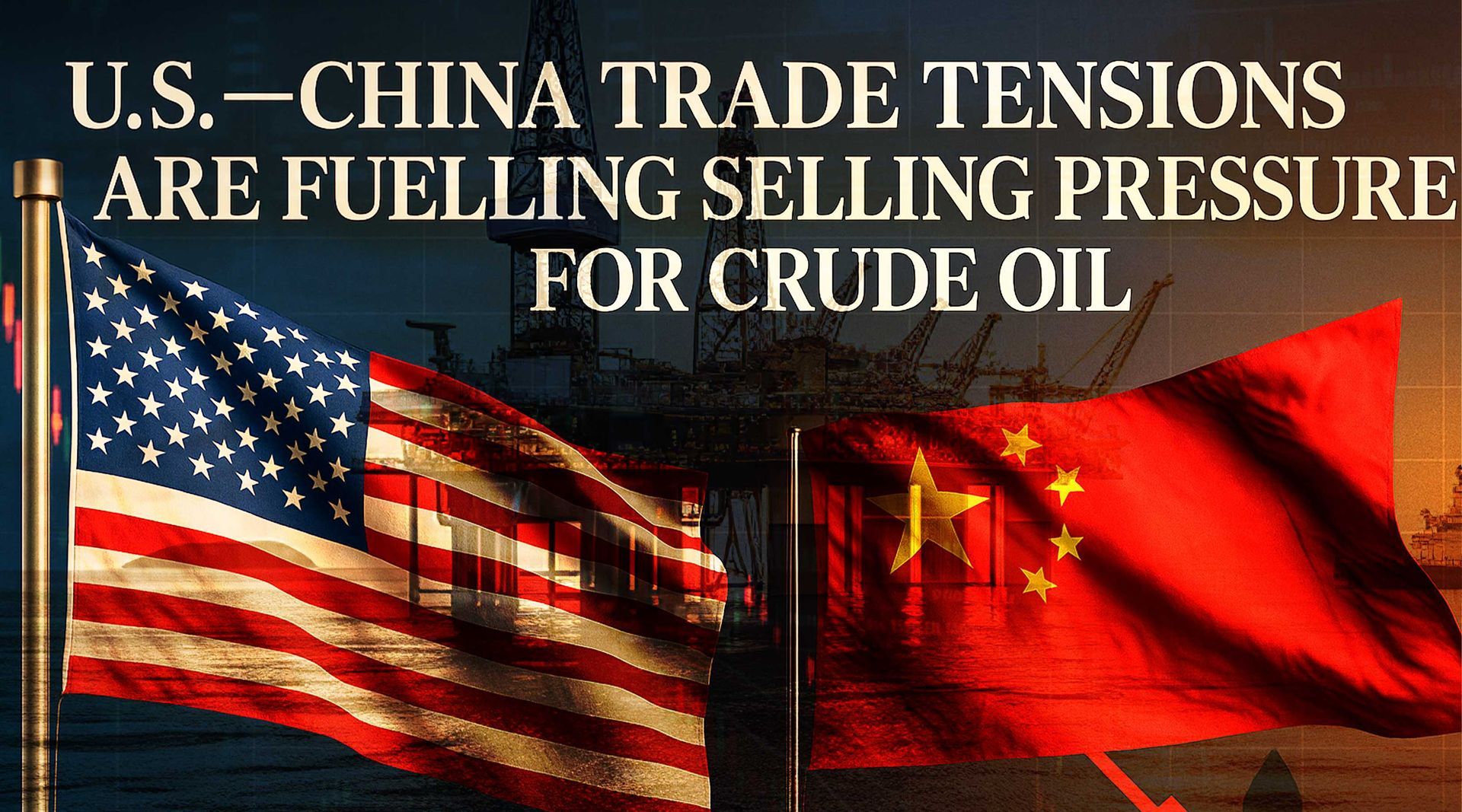IEA Surplus Warning, China’s Import Slowdown and a Russian Refinery Outage Shake Global Supply
Published in Abu Dhabi, 20 October 2025 2:56pm (GST)
Over the past week oil traders have been pulled between two very different narratives. On one side, fears of a deep oversupply have dragged Brent and WTI to multi‑week lows, with benchmarks down more than two percent last week and early trades this week seeing Brent futures around US$61.11 and WTI near US$57.34 as investors priced in a looming glut. On the other side, geopolitical flashpoints continue to crop up, briefly tightening supply and reminding the market that refined products and crude flows can be interrupted without warning. At Auctora we see opportunity in the dislocation between these themes – but only for buyers and sellers prepared to adjust strategies quickly.
The oversupply narrative gains momentum
The International Energy Agency’s latest market update raised its forecast for global supply growth and warned that the world could be staring at a major surplus as soon as 2026. Analysts now expect non‑OPEC production to grow faster than demand, driven by the United States, Brazil and Guyana. At the same time, OPEC+ has been unwinding some of its output cuts, reversing course after nearly two years of restraint to regain market share from U.S. shale and other rivals.
The Gaza ceasefire has further reduced concerns about supply disruption in the Middle Eastoilprice.com. Combined with an easing of U.S.–China trade tensions, these factors have encouraged selling pressure and pushed prices lower.

Toshitaka Tazawa of Fujitomi Securities summed up the mood in Tokyo this week: “Concerns about oversupply from production by oil‑producing nations, coupled with fears of an economic slowdown and easing U.S.–China trade tensions, are fuelling selling pressure”.
Put simply, the market is anticipating more supply just as demand indicators from Asia and Europe soften. U.S. crude production, for instance, ticked up to another record high last week, adding to the sense that supply growth is still outpacing consumption.
China’s storage flows slump as imports slow
While the global narrative focuses on oversupply, China – the world’s largest importer – delivered a different signal. According to Reuters calculations based on official data, China’s crude surplus stood at about 570,000 barrels per day in September, down from 1.01 million bpd in August. The decline occurred because imports fell and refinery throughput rose, reducing volumes available for storage.
In other words, Chinese refiners have been processing more crude even as new purchases slow, a combination that can quickly flip the oversupply narrative if the pattern persists.
At the same time, refining margins across Asia have been under pressure, suggesting demand for products like diesel and gasoline remains fragile. Traders we spoke with in London this week noted that middle‑distillate cracks have narrowed despite seasonal demand for heating fuels. Auctora continues to monitor Chinese buying closely: a rebound in imports could tighten the market into year‑end, especially if U.S. output growth stalls or OPEC+ trims production again in November.
Russian refinery outage tightens European product supply
Geopolitical risk hasn’t disappeared. Late last week a Ukrainian drone strike forced Russia’s Kirishi refinery to shut down its CDU‑6 crude distillation unit, the plant’s largest processing block. Media reports estimate the CDU‑6 accounts for roughly half of Kirishi’s 360,000 bpd capacity and that the outage could last around a month.
Industry sources suggest the loss could remove up to 160,000 bpd of refined products from the market, tightening European supplies just as autumn demand kicks in.
The incident underscores how quickly supply disruptions can materialise. With European diesel stocks already below five‑year averages and new sanctions on Russian fuel exports coming into force, any further outages could widen diesel differentials and create spot shortages. Buyers in the Mediterranean and northwest Europe should maintain alternative sourcing channels – including cargoes from the Middle East and Asia – and be prepared for shipping delays if war risk premia increase.
What this means for Auctora’s clients
The juxtaposition of oversupply fears and sudden supply losses demands a flexible, risk‑managed approach. In discussions with buyers in London and the Gulf this week, three common questions emerged: How low can prices go? Is now the time to lock in cargoes?
How do we protect against upside risk?
Our view:
- Use weakness to secure physical volumes: With benchmarks under pressure and contango widening, now is a good time to book Q4–Q1 cargoes at favourable differentials. Focus on grades with reliable loading programmes (e.g., UAE’s Murban, Nigeria’s Bonny Light) and ensure sellers have verifiable export licences and proof of product.
- Hedge selectively: The supply surplus narrative may persist, but record refinery outages and geopolitical flare‑ups can spark sharp rallies. Consider buying calls on gasoil or Brent to cover upside exposure while continuing to sell forward production or inventory via swaps.
- Diversify logistics: Maintain optionality on routes. Higher freight rates out of the Arabian Gulf are likely if insurance premiums rise; securing alternative berths in the Med or using floating storage can minimise disruptions.
- Stay disciplined on documents: Ensure deals adhere to Incoterms 2020 with no upfront payments or questionable tank‑to‑tank structures. Demand complete corporate packs, refinery allocation letters and inspection reports before committing to SBLCs or DLCs.
A note from our CEO
“The last ten days have highlighted why our approach remains rooted in due diligence and optionality. Oversupply concerns are real, but they can be upended overnight by unexpected outages or policy shifts. Our team is advising clients to take advantage of current softness to secure supply while keeping powder dry for any price spikes. We’re actively sourcing EN590, crude and LPG cargoes from trusted partners in the UAE, Saudi Arabia and West Africa, and we’re reinforcing our documentary standards to protect buyers from exposure. Markets will stay volatile; our job is to turn that volatility into opportunity.”
Key takeaways
- IEA sees looming oversupply: Non‑OPEC supply growth and the unwinding of OPEC+ cuts could create a significant surplus by 2026.
- Prices under pressure: Brent and WTI futures fell for a third week, with early trade this week around US$61.11and US$57.34.
- Chinese crude surplus halves: Lower imports and higher refinery runs cut China’s surplus from 1.01 million to 570,000 bpd in September.
- Russian refinery outage: A Ukrainian drone strike forced a key Russian CDU‑6 unit to shut, potentially removing up to 160,000 bpd of products for a month.
- Action plan: Lock in cargoes at current discounts, hedge selectively against spikes, diversify logistics, and demand stringent documentation on all trades.
Auctora Trade Group will continue to monitor global supply signals, refining outages and geopolitical developments to keep our clients ahead of the curve. For bespoke guidance or to discuss your specific procurement needs, contact your Auctora representative.















